CT Trolley Museum - Outside
Outside the CT Trolley Museum



Around the horn of the photo on the front page.


Details of the signal car and the little flatbed repair car from the last photo.


An old Chicago rail car fronts the northeast side of the driveway.

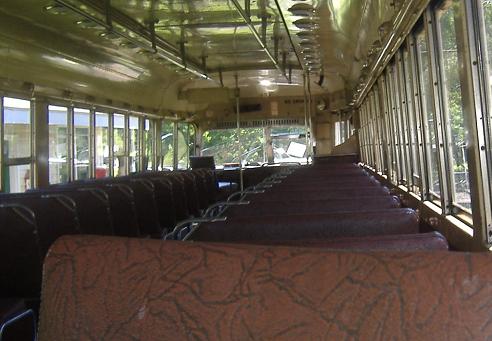
The car is in vintage condition, but it'll need to be better than that before it runs down the tracks with people inside.
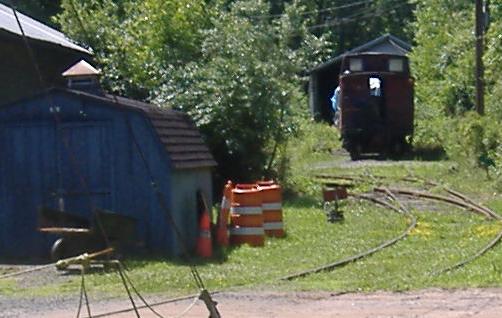
The magical restoration barn behind the Kelly Barn, from which all manner of strange creatures propagate forth, such as the first railcar on the barn page.

The futuristic Bradley Airport shuttle. Without having read anything about it, I bet it's from the 1980's.


East of the firetruck wing of the museum, I at least know the second one was an electric bus. As you can see, any museum collecting old stuff tends to get other old stuff that's not really related.


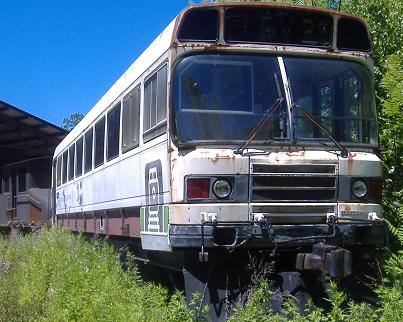
Behind the sinister-looking short locomotive is a railway-converted bus. These are past the buses and the old tow trucks.

Random old stuff, rusted and unlabelled, to the southeast of the museum.

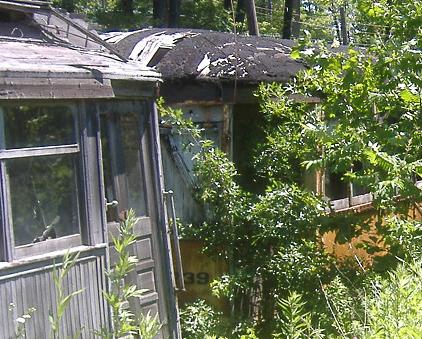
Heading farther east into the woods, alongside the restored railroad tracks, these cars are about as far out of repair as they can be and still stand upright on their own.
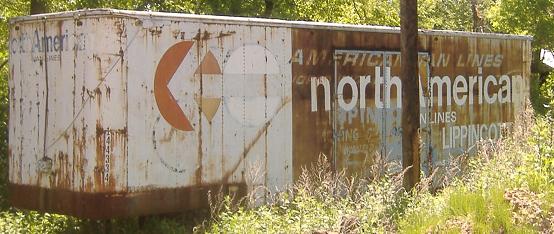
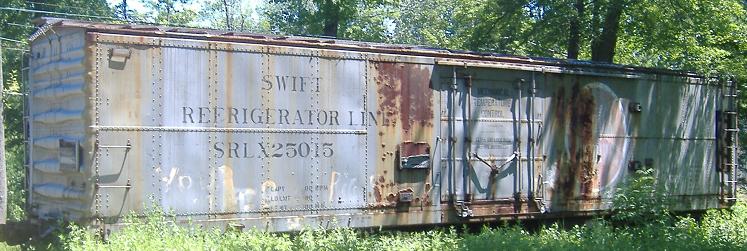
Even farther along the tracks from there, cars that desperately need a new coat of paint. The North American Van Lines trailer gets to choose how old it wants to be, since enough of the original paint job shows through.

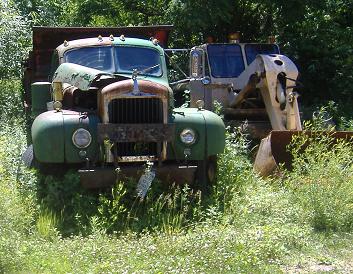

Back to the south wall of the museum, where no one else dares to tread. These hulks need your help before they die! Please support the museum! (Or else you won't get to watch your favorite Britcoms and Philharmonics.)
Montréal Tramways Car
This is one of two or three cars in the rotation that take people along the restored streetcar railroad owned by the Museum (which originally operated from 1906 to 1926). It's actually a nice, long ride, so that by the end you can really appreciate modern, smooth cars and modern, smooth track.
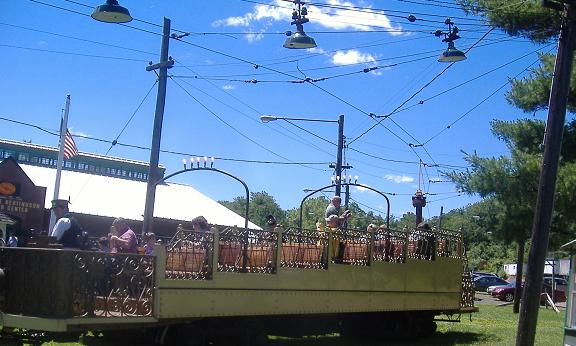
The stepped sides mirror the ramp on the inside. This was built as an observation car, so by having each row higher, everyone could look out. I now defer to the Museum's description of the car, generously furnished by Joe F. Smith:
The Montréal Tramways Electric Open Observation Car No. 4 was built in 1924 by the Montréal Tramways in their Youville Shops. (Is that next to Whoville?) Sister Car No. 3 was built at the same time (but isn't at this museum). They are similar to Nos. 1&2 but have steel under-frames, are one foot longer (47'), and differed in minor details such as the number of lamps on each overhead "bow" and the absence of "beaver plaques" (why, oh why couldn't this car have a beaver plaque?!). The car seats 50, has four motors, and weighs 44,650 pounds (I assume gross). The sister cars started out with air brakes, but in the late 1930's they were equipped with dynamic brakes for use on the mountain line up Mt. Royal. In 1943, World War II stole the carriages of these cars, so in 1945 they all received new trucks (truck being another term for the mechanical underpinnings). In the same year, a three-window front windshield was installed on the cars for protection of the operator from flying bugs and poutine, but was removed by the Railway Museum (assuming that's what C.E.R. stands for). I'm starting to embellish these notes, can you tell?
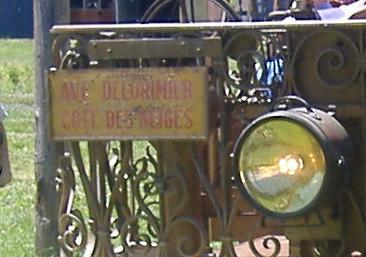
With this sign on the front of the car brings the remainder of the Museum's notes: The original 1910 route was "Park Avenue (or Avenue Parc) - Snowdon", and after World War II Montréal added the route appearing here, "Parc Lafontaine - Côte-des-Neiges", to cover areas east of Park Ave. The observation route ended regular runs in 1957, just a year after changing the route (and Joe sent me details, and I don't see a terrible need to reprint them, because you're likely not from Montréal, and if you are, you wish this page was in French), and then in 1958 even charters ceased running on the observation route.


Looking back on the car and then toward the front. In one of these photos is my semi-anonymous contributor, Kelly W. Guess which one.
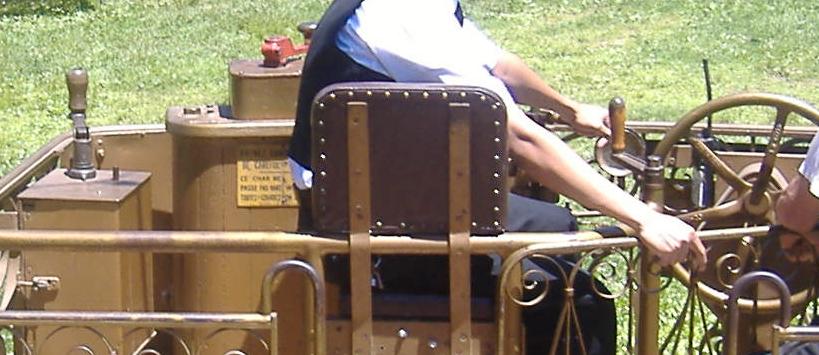
A closeup of the operating equipment at the front of the car.

The car has started moving, past an old Chessie car from the Chesapeake and Ohio Railroad. The cars along the track reflect the basic fact that the farther you get from the Museum, the worse the repair condition of the cars you'll see.

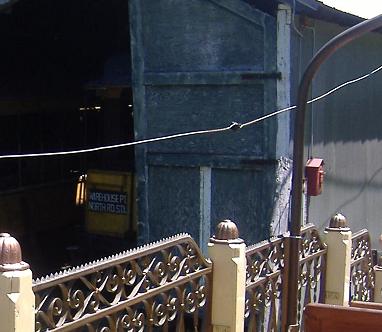
Passing a restoration barn along the way. The closeup shows you that the Museum has tacked another East Windsor destination plate onto this car.




Past the Yard Limit, past the embossed Auto Block sign with a signal next to it (Auto Block is something that a Yard would do), and out to the open track. And then, to the end of the restored track. Another half-mile to mile is still clearcut through the trees, and then I can't find a trace of the original alignment on aerial photography.

Bilingual exit sign hangs out in the very back of the car, snug against the rail. It looks unrestored, and I wonder whether it wasn't noticed, or whether it was noticed and left there as a prize for those who are particularly observant. (You'd have to look down and to the right as you descend steep stairs.)
Trolley Museum main page
Back to Connecticut Non-Roads
Back to Non-Roads main page



































